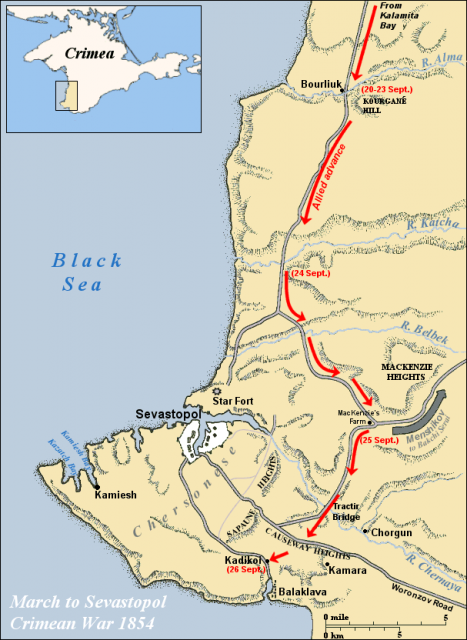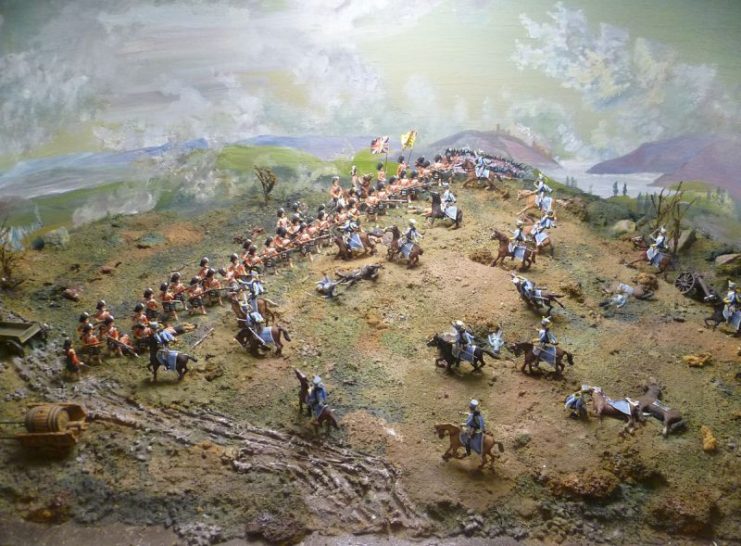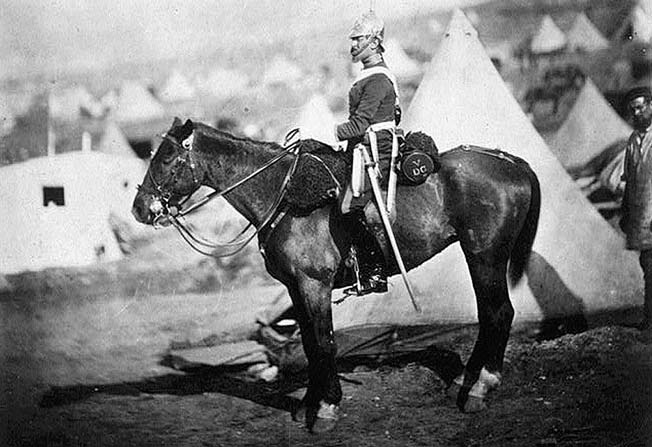The Crimean War commenced in 1853 and ended three years later, in 1856. A coalition of Ottoman, British, French and Sardinian forces opposed the Russian Empire in Crimea. The casus belli was of a religious nature. The Russians considered the rights of Orthodox Christians in the Holy Land, then under Ottoman control, were being jeopardized.
What is considered today to be the real reason behind the conflict was a much more geopolitical matter. In the mid-19th century, the Ottoman Empire was losing its foothold in Europe and was on the verge of collapse. The lifelong dream of the Russian Empire was to expand westwards, towards the Balkans and the Mediterranean.
Britain, France, and Sardinia considered such a shift of power to be far too dangerous for them in the long run. The coalition decided to invade Crimea and put an end to any potential Russian expansion.
After a year of fighting resulting in success for the coalition, Russian forces were defending against the siege of Sevastopol. The city was the principal naval base on the Black Sea held by the Russians, thus making its capture a top priority for the coalition ― one which could very well end the war in the Crimea.
A significant force of British troops, together with French and Ottoman reinforcements was sent to secure the smaller port town of Balaclava, south of Sevastopol. The coalition was attempting to establish a perimeter for the protracted siege as they had agreed that a direct attack on the city would incur the loss of too many lives.
Balaclava was on the right flank of the siege and was crucial for the supply chain which had been established to continue the blockade. Lord Raglan was in charge of the British and Ottoman forces stationed there. Early in the campaign, he had proved to be a successful officer during the Battle of Alma, which had secured the coalition’s foothold in Crimea.

Realizing British troops were exposed and that they were too few in numbers to hold such a position, the Russian General Pavel Liprandi decided to act to relieve the siege and disrupt the coalition’s supply route. He mustered an army of 25,000 men to confront the coalition forces defending Balaclava on October 25, 1854.
On the southern part of the front, more than 2,500 Russian cavalrymen descended on the first line of defense of the British Light Brigade’s field camp which was held by hastily constructed Ottoman redoubts ― enclosed defensive emplacements ― and all hell broke loose.
The Ottomans could not hold the line and they were ordered to retreat to the second line of defense held by the Sutherland Highlanders 93rd (Highland) Regiment under the command of Sir Colin Campbell. The Russian forces consisted mainly of skilled cavalry which was extremely mobile and deadly once in full charge.
Around 200 Highlanders were joined by a routing force of some 350 Turks to form a two-man deep line of riflemen. Traditionally, a cavalry charge was opposed by forming a line consisting of four men, one behind another. The Russian cavalry thought they had a tremendous advantage, as a two-man line cannot reload quickly enough while being covered by only one barrage. However, Sir Campbell took the decision as the Highlanders were armed with new Minie rifles which had proved to be very successful. The coalition line was stretched, but Ottoman infantry covered its flanks.
400 Russian cavalrymen, supported by artillery fire, charged. Sir Campbell reportedly shouted to his soldiers:
“There is no retreat from here, men. You must die where you stand.”
To which his aide, John Scott replied:
“Aye, Sir Colin. If needs be, we’ll do that.”
To the surprise of the Russians, the Highlanders pushed back the charging cavalry, despite the Ottomans having fled. When their enemy retreated, the men from the 93rd wanted to commence a counter-attack, which Sir Campbell explicitly forbade with the cry:
“93rd, damn you highlanders for all that eagerness!”

It was unbelievable – a force that had stood so thin with little chance of survival not only routed the enemy but was unified in its demand to pursue and annihilate the remaining Russian troops.
A correspondent for The Times, William H. Russell, who was present at the battle immediately wrote of the courage presented by the British troops. He illustrated the scene quite vividly, noting that between the Russian charging cavalry and the British regiment’s base of operations stood nothing but a “thin red streak topped with steel” ― the Thin Red line of the 93rd.
It was from Russell’s article that the phrase The Thin Red Line was derived. The successful defense was praised in Britain, partly because the costly war was becoming more and more unpopular among the general public.
Also, it served as a distraction from one other not-so-glorious event that took place during the Battle of Balaclava. The infamous Charge of The Light Brigade took place on the same day. Due to a misunderstanding in the chain of command, the Light Cavalry attempted a frontal assault against an artillery battery, which repulsed them, inflicting enormous casualties.
Nevertheless, thanks to the 93rd, the Thin Red Line remains an expression representing a thinly spread military unit holding firm against an overwhelming attack.
Due to their unparalleled bravery, the Highland soldiers were presented with more Victoria Crosses for that battle than at any other time in their history.
